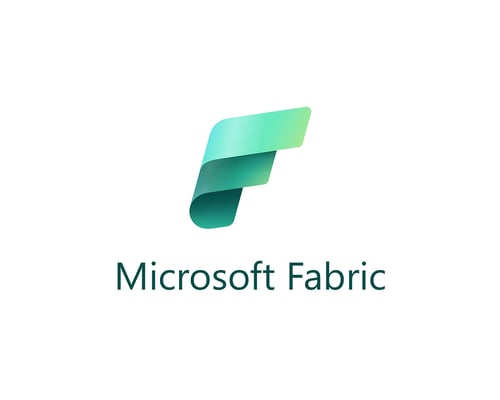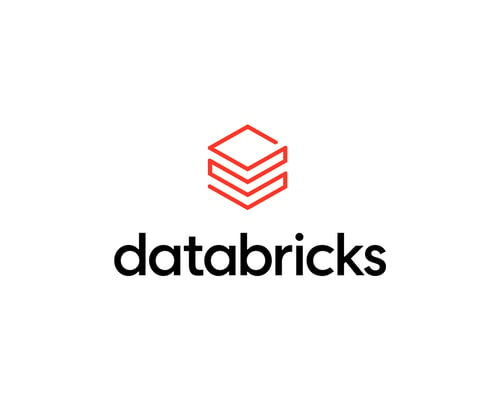Data platforms
A data platform is not just a technical solution; it's a strategic investment that unlocks the full potential of a company's data. We create robust, secure, and scalable platforms that allow businesses to efficiently store, process, and make sense of large volumes of data. Our experienced team collaborates closely with each client to craft tailored solutions using cutting-edge technologies, whether it's a cloud-based platform, data warehouse, or big data solution.
A data platform is like a powerful engine that gathers, processes, stores, and provides access to data. It seamlessly integrates various data sources and automates tasks, ensuring data quality and accessibility. Whether delivered through the cloud, as a service, or on-premises, it serves as the backbone for managing and utilizing data effectively.
.jpg?width=2048&height=1367&name=twoday%20G%C3%B6teborg%20-%20webres%20(134%20of%20146).jpg)
Make data accessible for all
With our data platforms, we provide more than just technical solutions. We offer a comprehensive approach that covers data integration, quality control, and automation. This means clients can focus on making informed decisions rather than spending valuable time on manual data management.
Implementing a data platform is a game-changer for businesses. It streamlines data operations, boosts flexibility, and ensures cost-effectiveness. It enables self-service data access, empowering users without technical expertise to harness insights. Collaboration becomes seamless, and better business decisions are made based on factual data, driving a data-driven culture within the organization.
twoday helped Optimar develop a digital operating platform for the seafood industry. The solution helps customers optimize their operations, and is now being used all over the world.
Everyone has the right to a cool kitchen – and everyone has the right to a state-of-the-art data platform.
With a flexible data platform in Azure Matas takes full advantage of their data. Now users and suppliers can gain groundbreaking insights into their customers.
The automobile industry is an international, competitive and rapidly changing industry. For a Finnish car plant to be successful, it must be a step ahead of its competitors in terms of skills, tools, suppliers and partners.



.jpg?width=1280&height=1280&name=case-asiakastarina-valmet-otsikkokuva-header%20(2).jpg)
What is a data platform?
Data is everywhere and is increasingly impacting more and more business processes and operations. Managing vast amounts of data, along with the the growing business need for the application of data, can be a big challenge for many companies. As a result, data can feel like a costly burden – rather than a value creator that supports better business decisions and provides deeper customer and market insights.
In short, a data platform is a combination of a number of tools that enable companies to collect, save, process, analyze, and access data in a structured and transparent way. The platform helps maximize the value of data and lays the foundation for a data-driven organization. twoday recommends a data platform built on a cloud-based data architecture which ensures a flexible and scalable solution that resilient to future needs.
This is how a data platform creates value
A data platform is absolutely essential for companies that want to make the most of their data and the value it holds. This is because the data platform supports the companies' processing of data from start to finish, ensuring a standardized and uniform way of processing and presenting data to the end users.
In addition, it provides a secure way to manage user access and permissions, making sure that people in the company can only access the data relevant to their needs and roles within the company. By maintaining data centrally, businesses can prevent redundant and inconsistent data processing across different departments.
The data platform covers the entire data value chain, supporting everything from data collection to the use of structured as well as unstructured data, processing and analysis of data, as well as the display of data to end users. As a result, the term 'data platform' is often used as an umbrella term for a number of components with different purposes and functionalities, which can be combined based on technical and business needs.
Broadly speaking, a data platform supports the following business processes:
Data Collection
Components for collecting and retrieving data for the platform - often referred to as 'Data Ingestion'.
Data Storage
Components for storing and archiving data - often referred to as 'Data Store'.
Data Processing
Components for processing, transforming, and enriching data - often referred to as 'Data Processing'.
Data Access
Components for displaying and making data accessible - often referred to as 'Data Access'.
Components of a data platform
As previously described, the data platform serves as the basic foundation, encompassing a wide range of components, each of which addresses a specific need. Together, the components of a data platform create synergies that maximize the business value of data.
The architecture and the components used in a modern, scalable data platform are far from set in stone, but depend on several different factors. Some of the key considedrations include:
- Types of data sources and formats
- Data volumes
- Number of end users, along with their roles and needs
- Requirements for reporting and access to data
Certain components form the backbone of a modern data platform. They all aim to reduce operational complexity and ensure high scalability and flexibility while providing a cost-effective platform. The core components typically include:
- Data Warehouse
- Data integration, archiving and processing
- Business Intelligence and data visualization
- AI and Big Data

Why is a data platform a good idea?
Traditional IT and data architectures are often challenged by a fragmented data landscape, where data is spread across different systems and "data silos". At the same time, the amount of data increases, technical bottlenecks arise, performance declines, new tools and user needs emerge, and the importance of and demand for data to support business decisions grows.
A data platform plays a central role in an organization as it provides a unified data foundation that is both flexible and scalable. At the same time, it enables the use of the best analysis tools across the various user groups.
The advantage of a flexible data platform lies in the ability to seamlessly connect new data sources over time, incorporate new data types, or use new components from the platform's ecosystem - without having to start over. This provides an architectural freedom, which is crucial to avoid becoming "locked in" as an organization.
With regard to scalability, the advantages of a modern data platform include the ability to scale resources both up and down as needed. This means resources can be scaled up during peak periods or based on telemetry - quickly, as needed, and without major phase costs. Conversely, resources can also be scaled down when they are not in use or when the demand for a particular resource decreases - in order to save operating costs. The benefit of scaling thus goes both ways.
Ultimately, this means that a data platform provides companies with a foundation built on functionality and flexibility. In this way, a modern data platform becomes the cornerstone of a data-driven agenda.
The business benefits of the data platform
There are many business benefits to implementing a data platform, as it ensures a structured and transparent way to use and create value from data. Below are some of the most important value creators for the business:
Cost-effectiveness
When you invest in a cloud data platform, you avoid the high capital costs associated with purchasing and maintaining software and hardware. When you move your data platform to the cloud, companies only pay for the services they use, which is often a much more cost-effective way to operate your IT and data infrastructure.
Self-service
The concept includes the possibility for end users, without technical expertise, to access data and create their own analyses. The platform provides a structured and secure management of self-service in the organization, where end users can access and analyze data in a fast and efficient way - to support better business decisions. It is implemented so that users achieve the desired flexibility, while IT has ownership of the process, thus ensuring a high level of data governance in relation to user rights and access to data.
Flexibility
It is also easy to add new data sources and components, which makes the platform extremely flexible. This is an essential feature, as the development of working with data is in constant motion, influenced by the increasing amounts of data, different data types, new systems and technologies. Thus, the data platform ensures that the company is able to meet the constant needs of end users in terms of obtaining new analyses and insights based on new data bases.
Make better business decisions
When companies have control over the entire data journey from start to finish, it will give end users access to deep insights into data, which will create an optimal foundation from which to make important business decisions. The data platform will enable end users to perform in-depth analyses and make fast, fact-based decisions. It will create a data-driven culture where data is an integral part of the workflow, which will motivate users to trust data over their gut feeling.
Collaboration
A modern platform enables more effective collaboration across the organization by providing common tools where different roles in a data project can work together.
Technical advantages of the data platform
The technical benefits largely overlap with the business benefits. Among other things, in relation to scalability and flexibility of the platform. Below are some of the most important benefits of implementing a cloud-based data platform:
IaaS, PaaS, SaaS
These are terms that you might as well get used to. Overall, the abbreviations for the terms cover: infrastructure as a service (IaaS), platform as a service (PaaS) and software as a service (SaaS). The effects of using services under one of these three types are savings in time, cost and effort from both the business and the technical resources. Services under the three types contain a greater degree of built-in components and functions, which helps to free up time for analysts, data scientists and data engineers, who can then go in search of more value-creating data projects in the organization.
Security and uptime
These are some of the keywords in a modern data platform. A cloud-based solution ensures high uptime and secure access to data using functionalities such as Geo-replication of data, Point-in-time recovery in connection with data restoration – and much more. At the same time, a modern cloud-based data platform provides much better opportunities for monitoring resources through advanced services for monitoring events and consumption on individual services, which can contribute to better resource planning and automated scaling, among other things.
Scaling and flexibility
One of the most significant benefits of a cloud-based data platform is the ability to easily and efficiently scale up and down and introduce new services based on business requirements. New services can be easily and quickly added as needed (on-demand self-service) and old services can be removed if they are no longer needed. This means that the organization needs to spend far fewer resources and less time operating the technical platform.
Automation
A cloud-based platform allows for much greater automation of development and maintenance tasks through the use of APIs and integration points. This allows for, for example, automating the addition of new data sources, managing and scheduling job runs, scaling resources, general automation of development code, handling security and much more. Automating processes can also contribute to better governance around data and assist in the creation of valid master data – including contributing to securing the “golden record”.
Get started with a data platform
No two companies are the same – and therefore no two solutions are the same.
Companies’ need to be able to make decisions based on data at lightning speed is crucial to their competitiveness. And it will be even more so in the future.
This calls for a modern data platform that can deliver insights and answer business-critical questions immediately.
At twoday, we have prepared a guide that shows you the way to a modern data platform. Easy and clear. But what does the path to a modern data platform actually look like? You will get a step-by-step roadmap in the guide below.
.jpg?width=2048&height=1367&name=twoday%20Ume%C3%A5%20-%20webres%20(19%20of%2039).jpg)



.jpg?width=500&height=500&name=twoday%20G%C3%B6teborg%20-%20webres%20(141%20of%20146).jpg)
.jpg?width=500&height=500&name=twoday%20G%C3%B6teborg%20-%20webres%20(122%20of%20146).jpg)
.jpg?width=500&height=500&name=twoday%20G%C3%B6teborg%20-%20webres%20(127%20of%20146).jpg)
.jpg?width=500&height=500&name=twoday%20G%C3%B6teborg%20-%20webres%20(35%20of%20146).jpg)
.jpg?width=500&height=500&name=twoday%20G%C3%B6teborg%20-%20webres%20(13%20of%20146).jpg)
.jpg?width=500&height=500&name=twoday%20G%C3%B6teborg%20-%20webres%20(116%20of%20146).jpg)